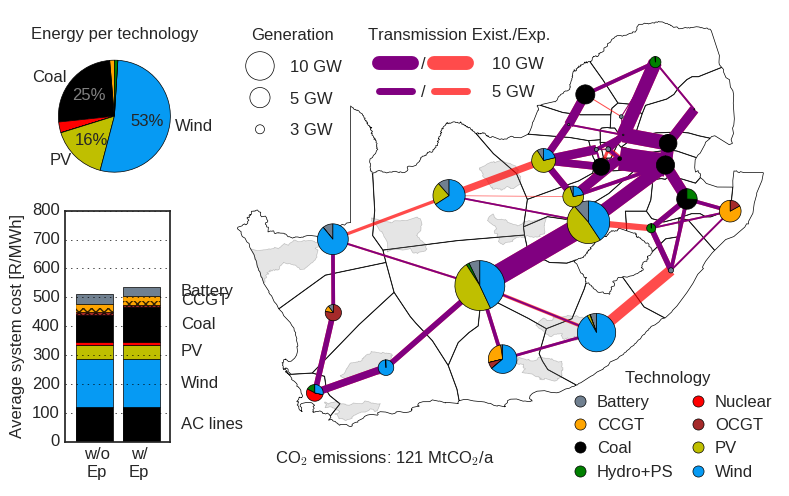PyPSA-ZA: Investment and operation co-optimization of integrating wind and solar in South Africa at high spatial and temporal detail
South Africa is in the fortunate position of having access to high-quality wind and solar resources promising energy production costs well below the ones projected for future installations of thermal generation; yet the feasibility of a low carbon energy system is still under scrutiny. This study introduces a spatially and temporally resolved techno-economic model co-optimising generation and transmission capacity investments and operation. 27 supply regions in South Africa are equipped with a year of time-series in hourly resolution based on the IRP2016 base-case assumptions. Eight different scenarios representing different restrictions on renewable generation and mitigation efforts of GHG emissions are evaluated and discussed. 70% of energy from renewable sources were found to be cost-optimally integrated using flexible gas generation and the expansion of several transmission corridors. A 95% CO${}_2$ reduction leads to a moderate 20% cost increase. The open-source nature of the model and restriction to freely available data encourages an accessible and transparent discussion about the future South African energy system, primarily based on renewable wind and solar resources.
PDF Abstract